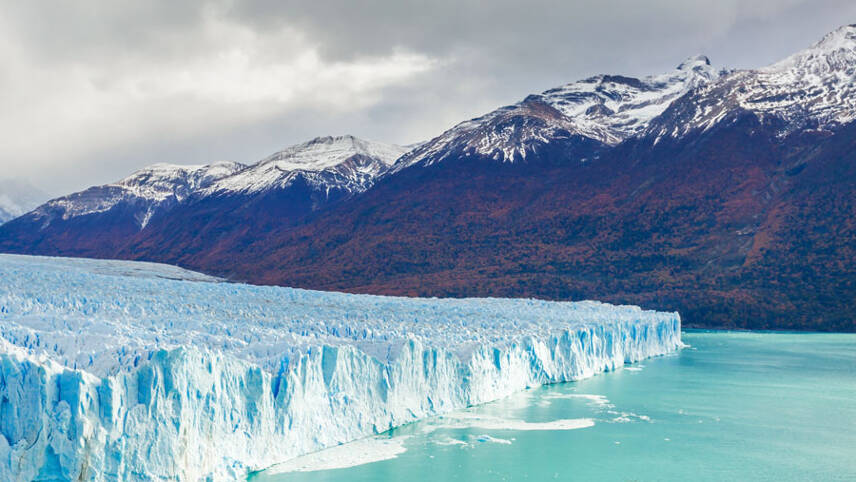Register for free and continue reading
Join our growing army of changemakers and get unlimited access to our premium content

Pictured: The Perito Moreno Glacier, Argentina
Released today (25 October), the Interconnected Disaster Risks Report from the UNU’s Institute for the Environment and Human Security is a sobering read.
It states that tipping points – the moment at which a system irreversibly ceases to be able to buffer risks and provide its expected function – are closer than we might expect in terms of climate, ecosystems and technologies. How these points are arrived at, the report states, is “typically not a simple and predictable process”.
Yet policy leaders tend to continue permitting “indiscriminate” extraction of natural resources and, in the main, support interventions which are incremental at best and which delay any meaningful action at worst. They also tend to underestimate the current and future impacts on human wellbeing and the economy of passing tipping points.
For example, a popular response to combat heat beyond the threshold bearable by the human body is to roll out additional air conditioning capacity and fire up more power stations to serve these air conditioning unit. But this will increase energy-related emissions, further fuelling the global temperature increase.
The report calls on world leaders and other decision-makers to end delay tactics and address the root causes of the issues, including fossil fuel use and the over-exploitation of natural resoueces. They must make bold choices to avoid further risk and to build in adaptation to risks already happening. These choices, the report states, will require the reimagining and transformation of whole systems with long-term sustainability in mind.
The report notes: “In each case… avoiding the risk tipping point will require more than a single solution. We will need to integrate actions across sectors in unprecedented ways in order to address the complex set of root causes and drivers of risk, and promote changes in established mindsets.”
Water risk
One tipping point discussed in the report has to do with groundwater depletion. Almost a third of the global population relies on underground reservoirs for their drinking supply, but at around half of these reservoirs, water is being depleted faster than it is naturally replenished. This is the case for 21 of the world’s 37 largest.
Goven that 70% of water withdrawals globally are used for agriculture, tipping points for these reservoirs will hit farmers first and hardest. From there follow risks related to food insecurity.
Another risk tipping point discusses related to water run-off from mountain glaciers. ‘Peak water’, when a glacier produces the maximum volume of freshwater run-off, is followed by a decline in freshwater availability from that glacier. It has already happened or is expected to happen in the next ten years for most of the small glaciers in central Europe, western Canada and South America.
The report states that 1.9 billion people are already at risk of negative effects due to glacier retreat, including nearly 970 million people in and around the glaciers of the Himalayas, Karakorum and Hindu Kush mountains.
How did we get here?
Seven key drivers of risk are covered in the report: insufficient future planning, atmospheric and ocean warming, risk-intensifying land use, pollution, a lack of regulation and enforcement, a lack of information and living and working in at-risk areas.
These are all linked to an economic system which prioritizes the maximisation of profits over all else and which undervalues environmental costs. This system breeds global pressures relating to increasing demands for goods and services and perpetuates social inequality by providing only certain geographies and groups with access to good development and livelihood opportunities. The legacy of colonialism and ongoing challenges in garnering international collaboration are highlighted in the report.
As already mentioned, the report concludes that most policymakers and business leaders are not opting for the transformational changes needed to stop adding to the risk mountain and to meaningfully build in adaptation to the risk already baked in to systems.
It does state that there is still time to “create the future we want” but that unprecedented action is required now.
Avoiding the groundwater depletion tipping point, for example, would be possible with a concerted effort to mandate more sustainable water usage in agriculture, including the introduction of efficient irrigation techniques at scale. There would also need to be efforts to ensure that urban developments would not disrupt natural filtration to such an extent.
This could delay the tipping point or put it off permanently, depending on wider systematic change to create a world in which water is properly valued and is not wasted, and in which nations make properly informed decisions on water infrastructure.
As the report nears its conclusion, it outlines a vision of a world without waste of any kind and a world in which humans are more connected to nature whether they live rurally or in an urban centre. The vision is also predicated on an economy in which decision-makers see themselves as stewards for future generations, not just people under pressure to extract maximum profits in the near term.


Please login or Register to leave a comment.